Changing my mind about historic Hot Springs
Spring baseball, open gambling, the most famous madam in America: What else was hiding in this Arkansas hotspot? A 10-photo tour of Hot Springs.
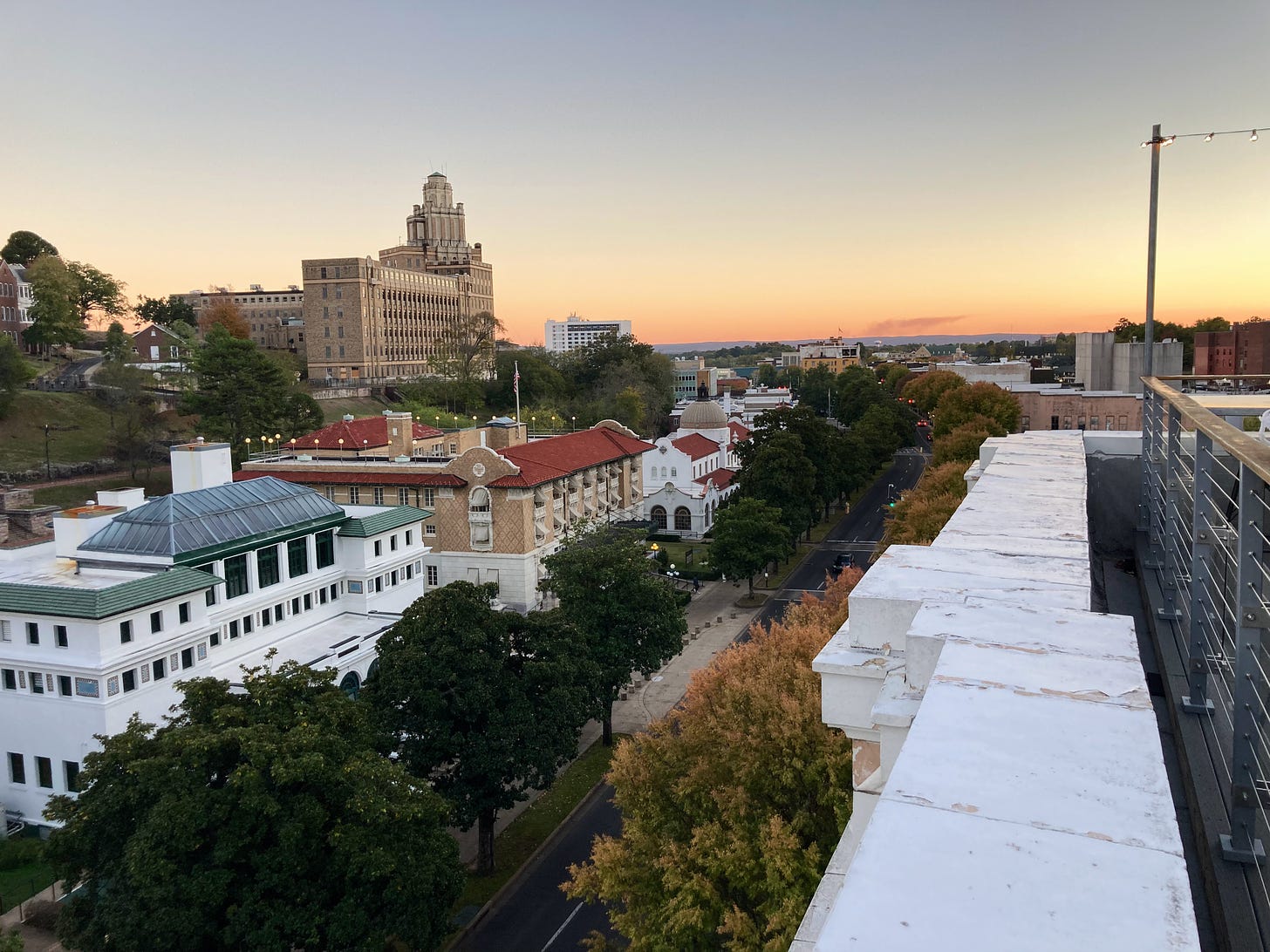
I knew Hot Springs was a historic place, but I didn’t quite grasp how or why.
I was always baffled by this mountain town halfway(ish) from Austin to Aurora, MO., a drive I make at least once a year. I’m always looking for interesting things to do in between, but because of those rolling hills, the route takes longer, so we rarely go that way.
But when I have driven through, I haven’t been able to crack into Hot Springs. There aren’t any public springs. The bathhouses aren’t open to kids. I’m not really into Main Street shopping.
Everything seemed to be closed — and, frankly haunted — when we last drove through maybe 10 years ago, so we just kept going.
But a few weeks ago, I visited as part of a media trip, sponsored by the local visitors’ bureau, for journalists to explore the area and learn about its history. Turns out I was totally wrong about this little tourist powerhouse that could.
I’m breaking this trip into three posts. First, a 10-photo tour to give you context for the place and why it’s worth exploring. On Wednesday, I’ll tell you what you need to know about eating and bathing in Hot Springs. And on Friday, we’ll dip a toe in the art scene.
This post is available for everyone, but the rest of the Hot Springs posts will be subscriber-only newsletters, so I hope you’ll consider signing up below. Thank you for your support!
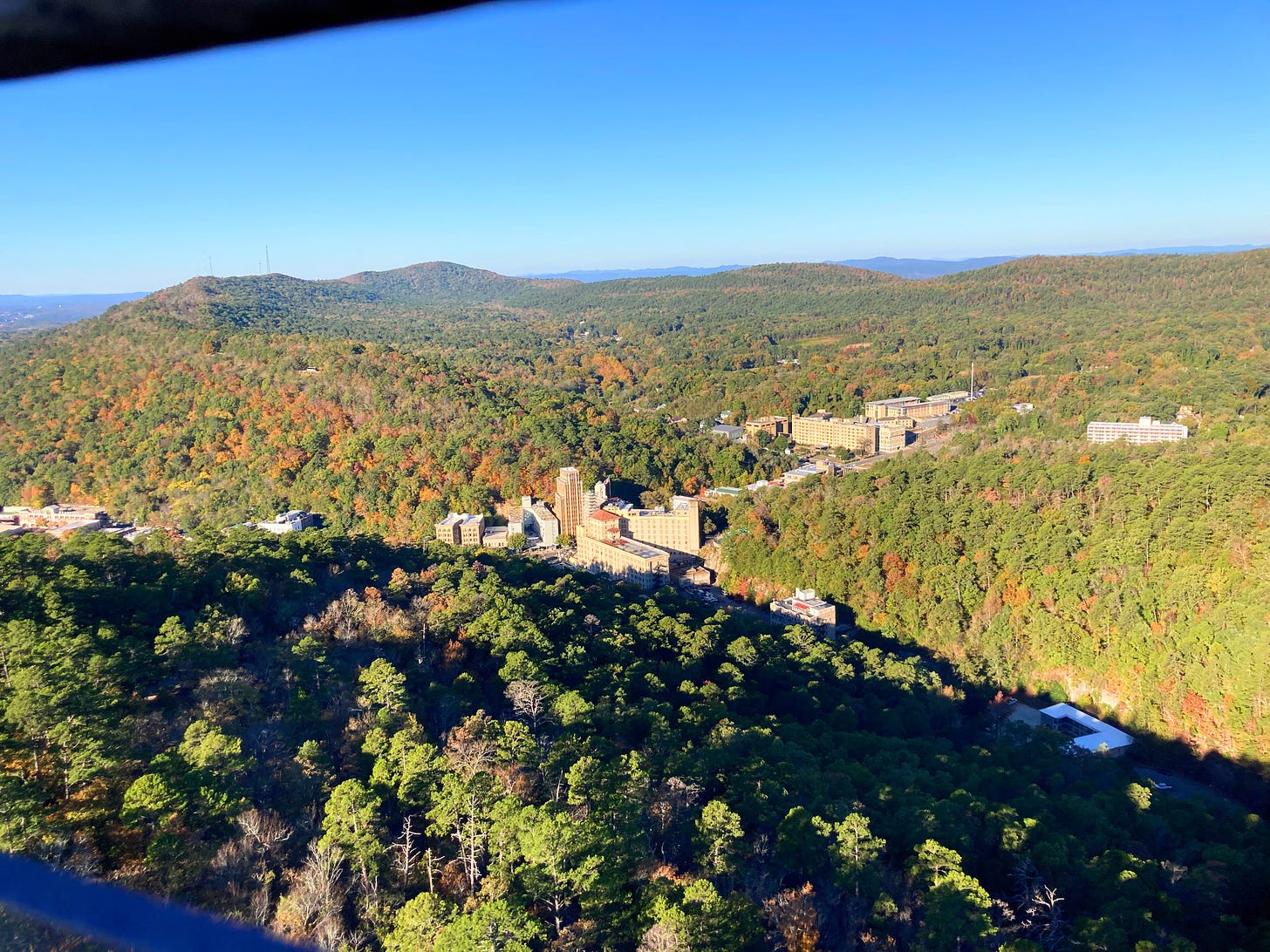
1: Hot Springs is in the Ouachita (“waa-shee-tuh”) Mountains, one of three east-west mountain ranges in the country. These tree-covered hills are often overshadowed by the Ozarks to the north, but when you’re there, they feel like one beautiful rolling forest. Indigenous folks called this area “the Valley of the Vapors,” and although I found very little information from native sources, the tourism board says the area was a neutral territory where all tribes could enjoy its healing waters in peace. Hot Springs Reservation, which pre-dated the national park system, was designated in 1832, 40 years before Yellowstone.
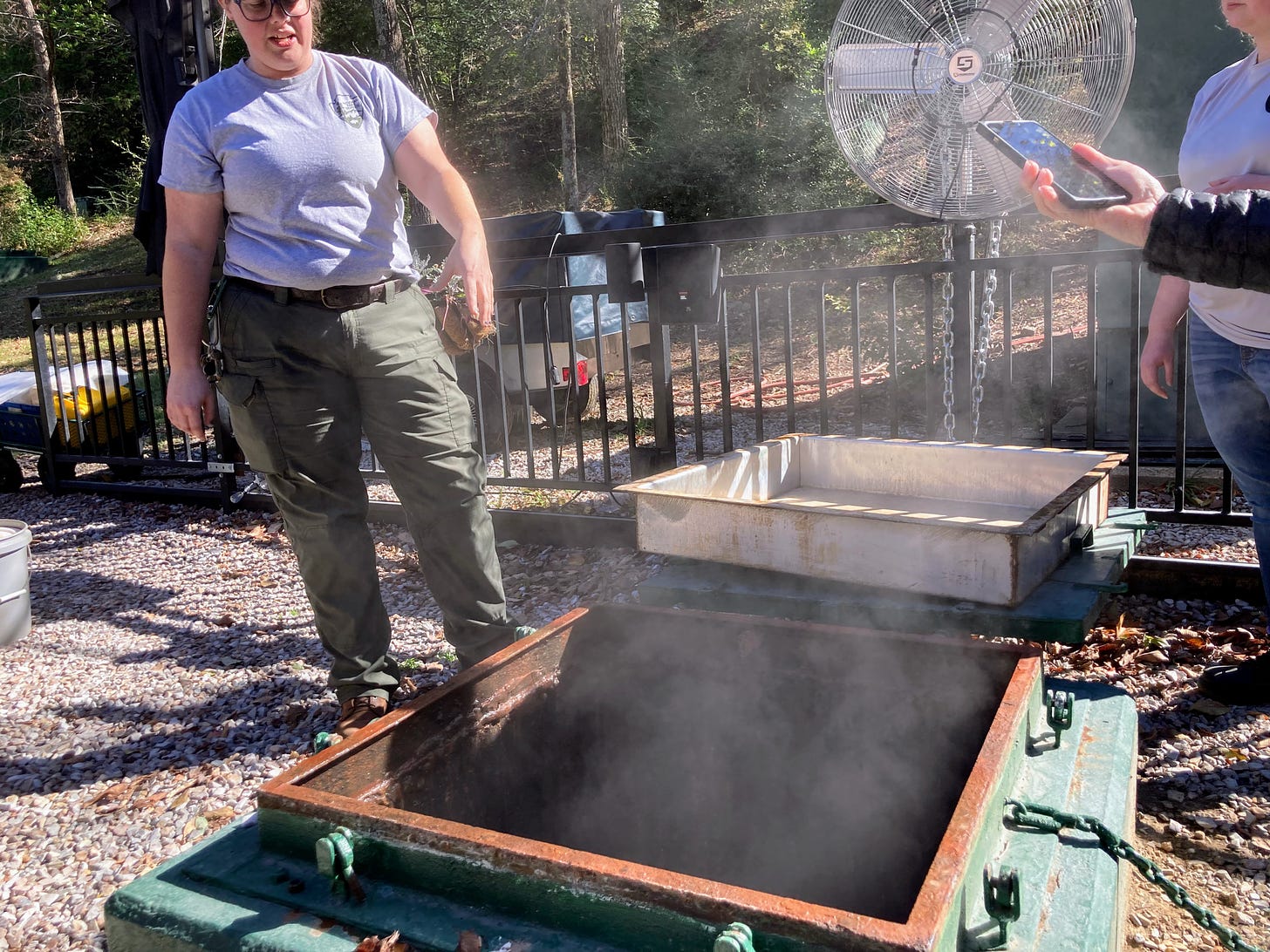
2: There are 47 hot springs in Hot Springs, and all but one of them are capped. The one that is open is too hot for lounging — you’ll get second-degree burns if you do. The water is about 143 degrees Fahrenheit and contains silica, bicarbonate, calcium, sulfate, magnesium and potassium, which prune and soften your fingers in minutes. The water tastes delicious, and there are several free taps in downtown Hot Springs that are available for the public to fill whatever vessels they’d like. Buchan said that folks drive horse trailers from Texas to fill up.

3: Quapaw and other indigenous communities have been using the thermal waters for hundreds, if not thousands, of years. White settlers started building rustic bathhouses in this area in the 1800s, and by the end of the century, bathing had become the town’s biggest industry, with a row of increasingly ornate buildings to welcome people who came from across the country for what were then prescribed baths. (A doctor would write a script for you to receive specific treatments, including electrified baths and mercury rubs.)
4: It’s impossible to talk about the history of Hot Springs without talking about the era when it was the biggest gambling destination in the country. Las Vegas legalized gambling in 1931, but by that time, Hot Springs was already the country’s gambling hub, particularly for East Coasters who were already coming for the springs and for moonshiners and mobsters who were supplying booze during Prohibition. The excellent Gangster Museum of America, which covers much more than gangster history, explains how Hot Springs went from a horse racing town to a gamblers’ paradise, and why it all came crashing down in 1967, when the Arkansas governor at the time finally cracked down on the clubs.

5: Spring baseball, as we know it today, started in Hot Springs. Starting in 1886, major league teams started sending their players to Spa City to get ready for their regular season. Babe Ruth, Joe DiMaggio, Hank Aaron and all the biggest names in baseball brought lots of attention to this tourism hotspot. No wonder gambling and places like Maxine’s thrived.
6: The madam who ran Hot Springs’ most famous brothels also helped take down the gambling industry. Maxine Temple Jones is a local legend so famous that she is mentioned in Bill Clinton’s autobiography, not a coincidence considering how many politicians she knew so well over all those years. In the 1960s, she got a lenient sentence from the FBI by offering information about the gambling operations at the downtown clubs where she got many of her patrons. She served two years in prison and then re-opened her businesses after her release in 1965, just before the gambling industry finally fell. She retired in 1971 and wrote a book about her life in 1983. She died in 1997.
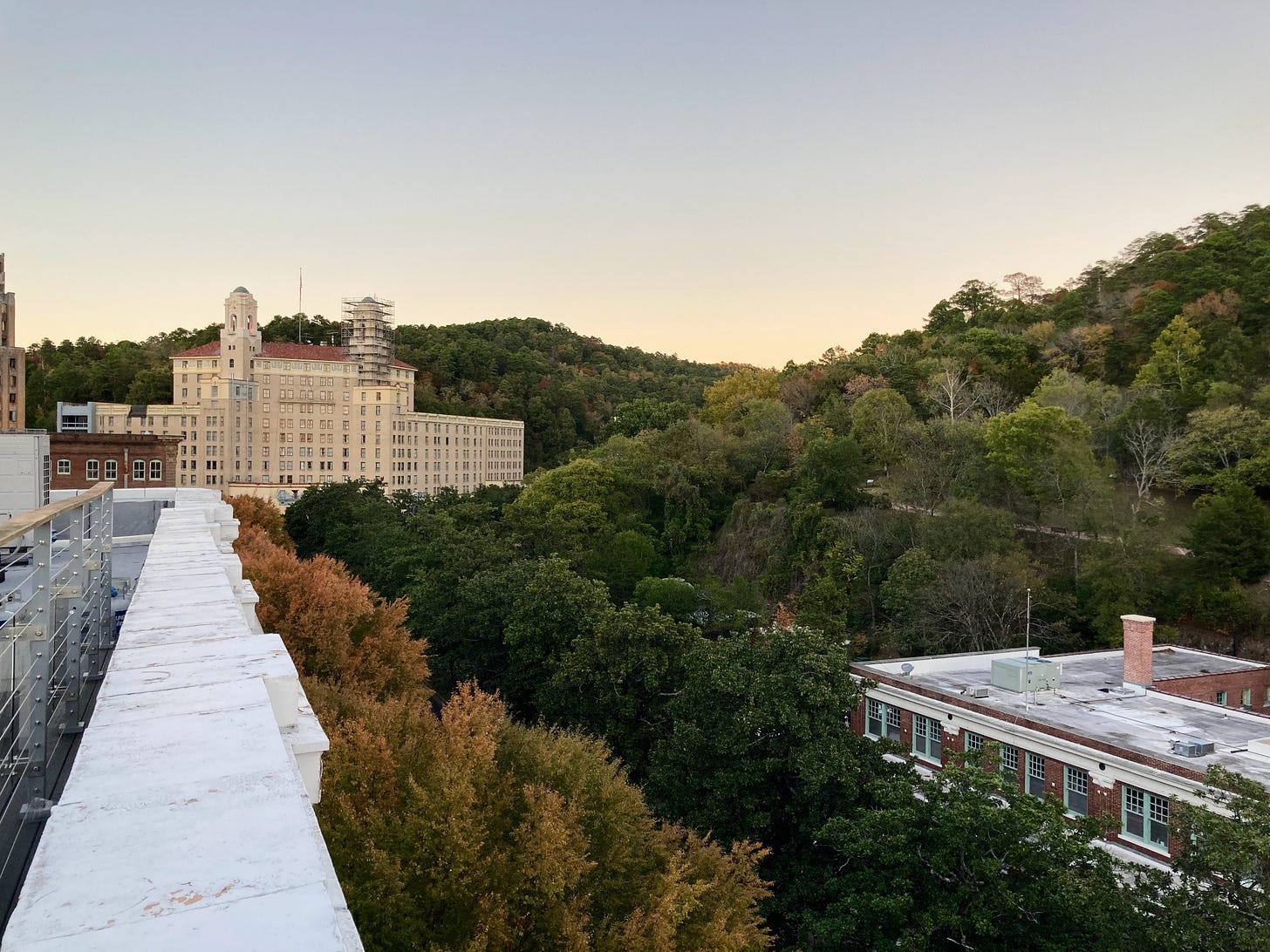
7: Those enormous historic buildings — namely, The Arlington Hotel, the Army Navy Hospital and the Medical Arts Building — that sit mostly vacant today (and are hard to miss) tell the story of Hot Springs fairly succinctly. In the early 1900s, private investors and the U.S. government saw Hot Springs as a place with limitless growth, for both people who needed treatment at the famed waters and high-dollar patrons who also wanted to take part in the fun. These buildings all have their own fascinating boom-to-bust-to-born-again histories. The Arlington has never really closed; the Medical Arts Building, an Art Deco early skyscraper featured in the original Superman, is under redevelopment; and the Army Navy Hospital is very much empty and its future up in the air .
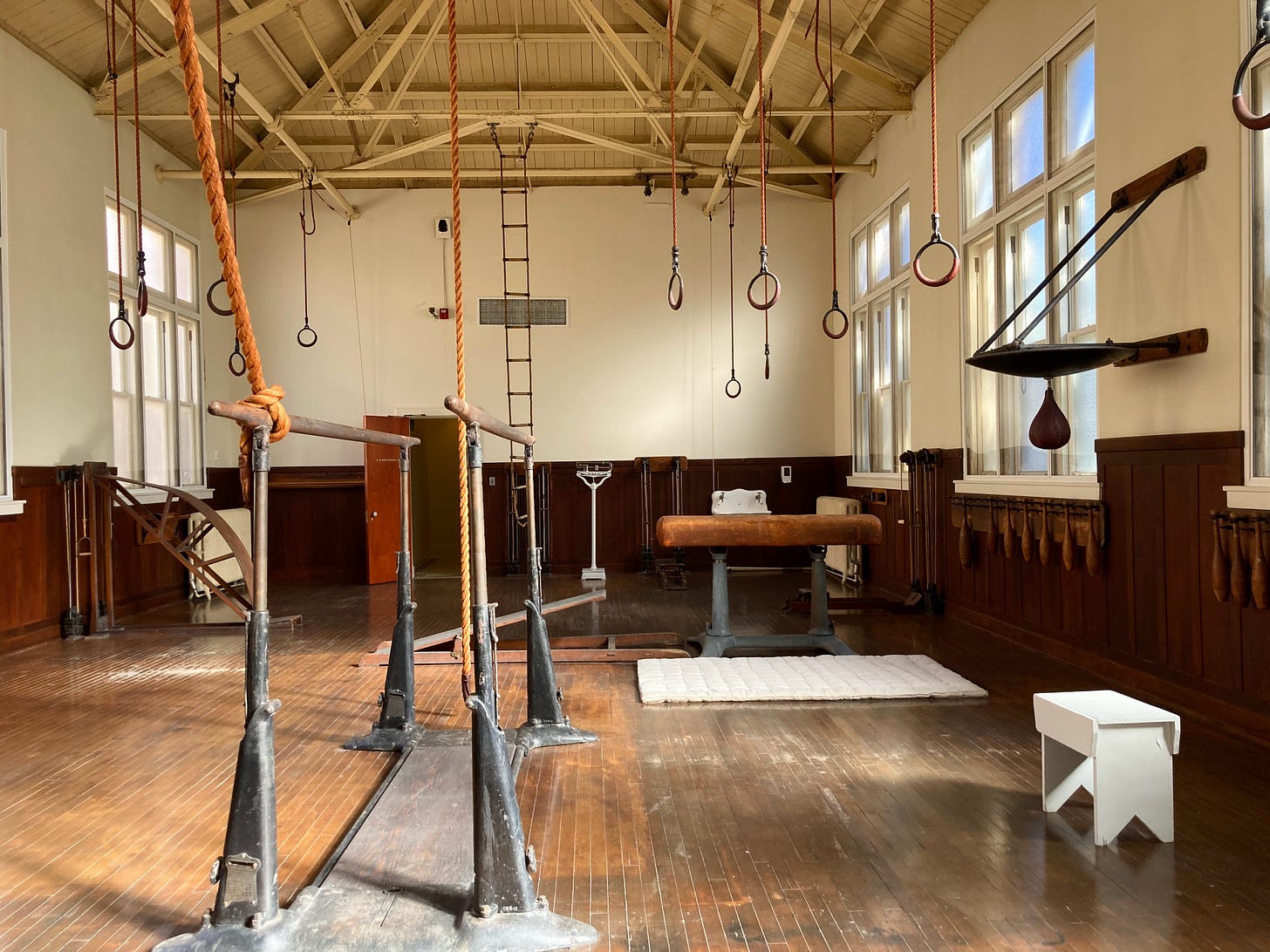
8: When the tourism economy dried up — as medical technology evolved beyond getting physical therapy in warm water (and early gyms, like the one above), and gamblers had to go where they could do it legally — the city faced many uncertain years. Most of the businesses downtown were boarded up by the early 2000s, but those buildings continued to hold much of the history. Things started to shift about 15 years ago, and the town has been in been in expansion mode, with shops, artist studios, revived bathhouses and a brewery-in-a-bathhouse that have made Hot Springs feel very much relevant again.
9: Unless you’re a paying bathhouse customer, you won’t get to experience much water in downtown Hot Springs. So, if you’re looking to spend some time in nature around water, head to one of three lakes on the Ouachita River. Downtown Hot Springs and the National Park right next to it have lots of trails — including the newly opened Northwoods Trails, a network of more than 30 miles of bike trails — but Lake Ouachita, Lake Hamilton and Lake Catherine are worth exploring.
10: Keep an eye out for history everywhere you go. Our last night in Hot Springs, our hosts took us to the Ohio Club, one of the famed nightclubs of the early 1900s. There’s a small stage in the back and history hanging on every wall. You could learn enough history to have a very fun weekend in Hot Springs by simply reading what’s on the wall in this bar. But everywhere you go, you’ll find evidence of this town’s storied past.
All you have to do is stop driving long enough to look at it.
Happy Hot Springs Week on The Feminist Kitchen!
I don’t always write about travel on this newsletter, but when I do, I try to do it in a way that you might not read elsewhere.
Of course, I’ll give you an idea of where to eat and what to do, but I really like writing about what gives a location its sense of place and how it fits in with the world around it. This usually leads to questions, many unanswerable but important to ask: Why is this place the way it is today? How have the people who live here changed over the years? What is causing those changes? Who is telling their story? Whose voices are missing?
I spent a few weeks on the road in October, so over the next few weeks, I’ll be writing some posts about those trips and some things going on at home, including my upcoming interview with Nigella Lawson at the Long Center. (And my partner Frank’s show, “Insecta,” is opening with a dance performance, live music and tacos, starting at 2 p.m. on Nov. 19!)
I hope you’ll join us.
Until next time,
Addie
Recently on The Feminist Kitchen:
You wear your service well, Dani
Without "Julie & Julia," there would be no "Addie & Nigella"
Shreveport has its eyes on the Prize
Eat on, Lubbock
I'm not crying in H Mart, you're crying in H Mart



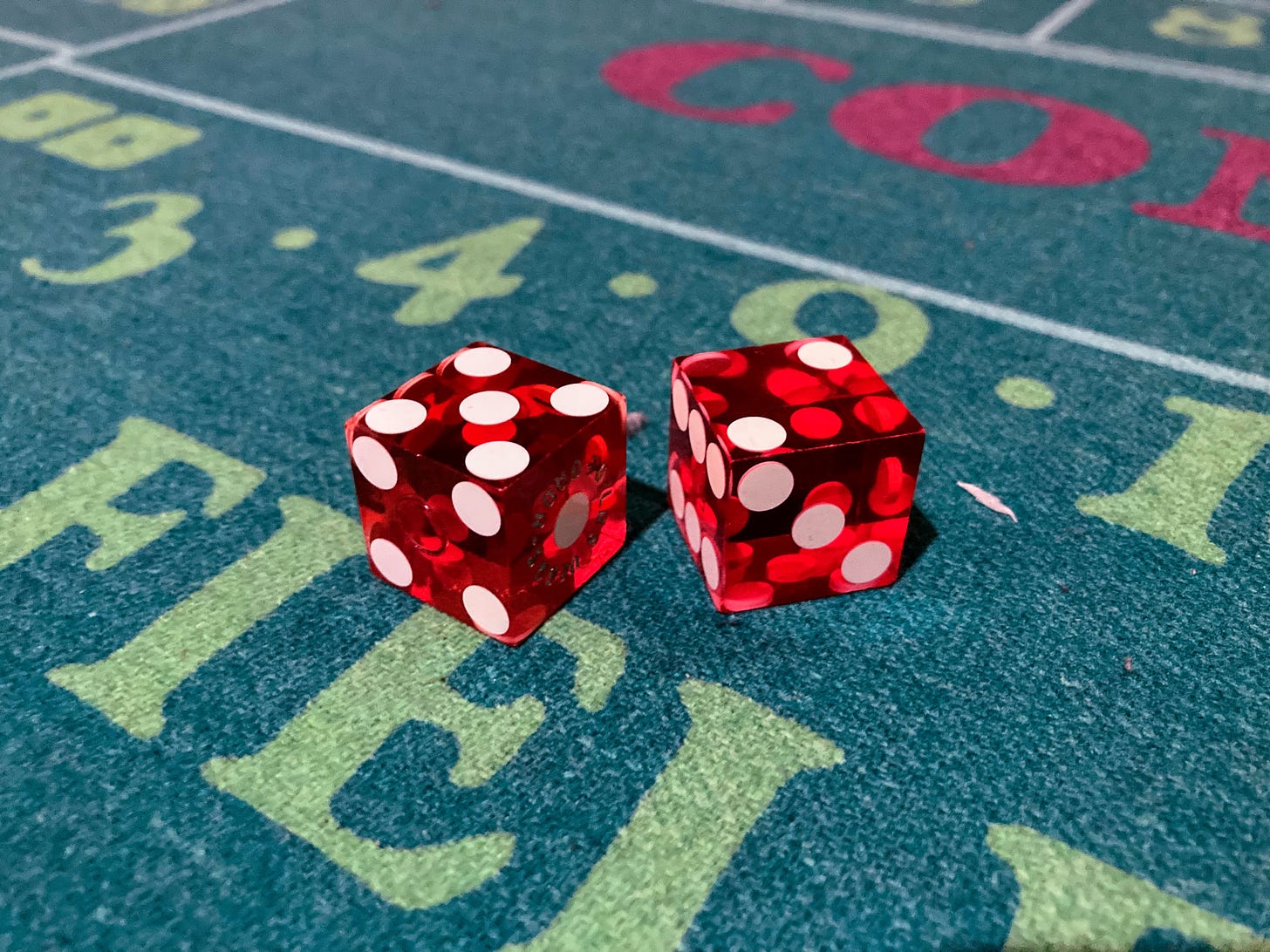
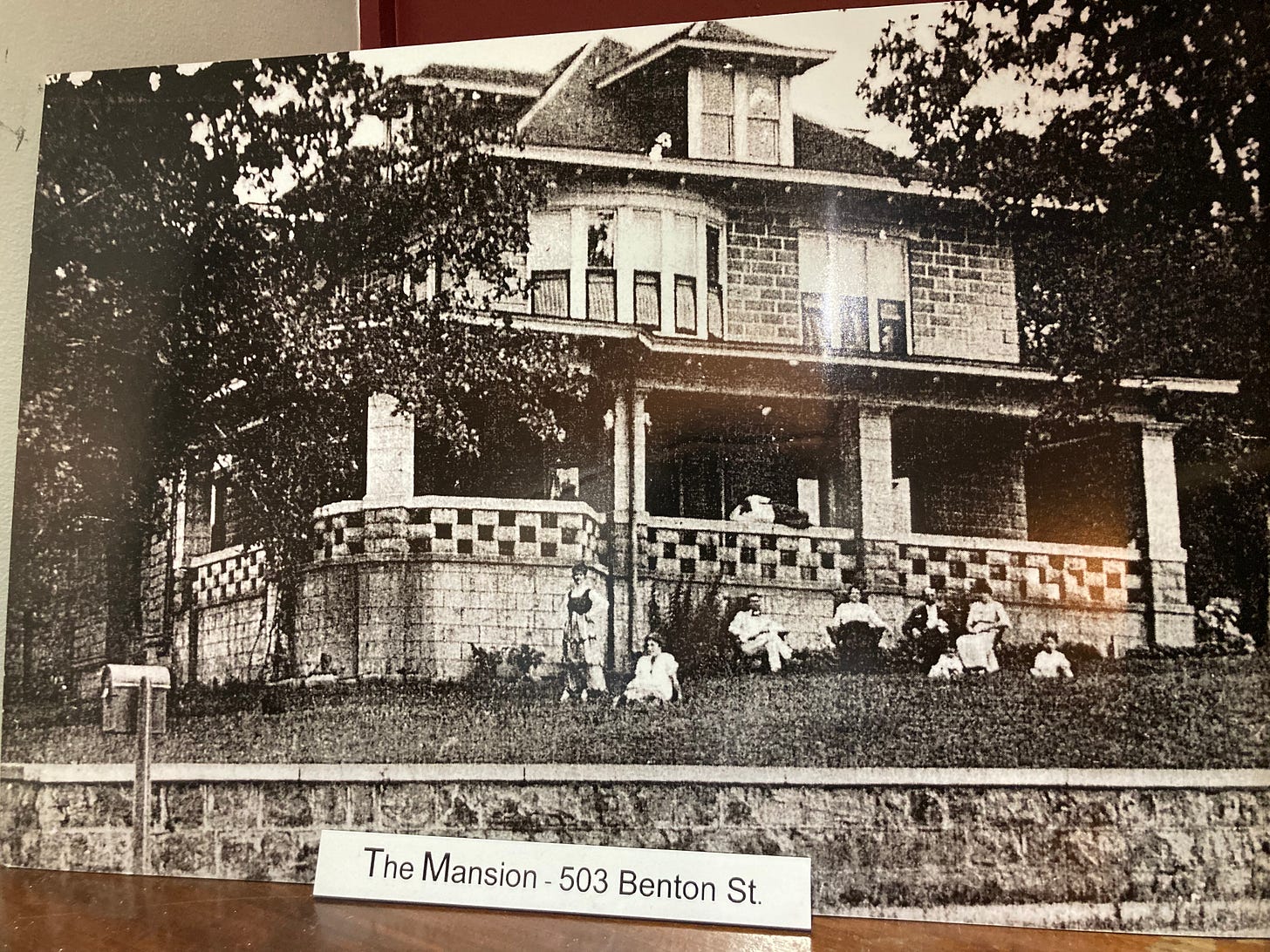
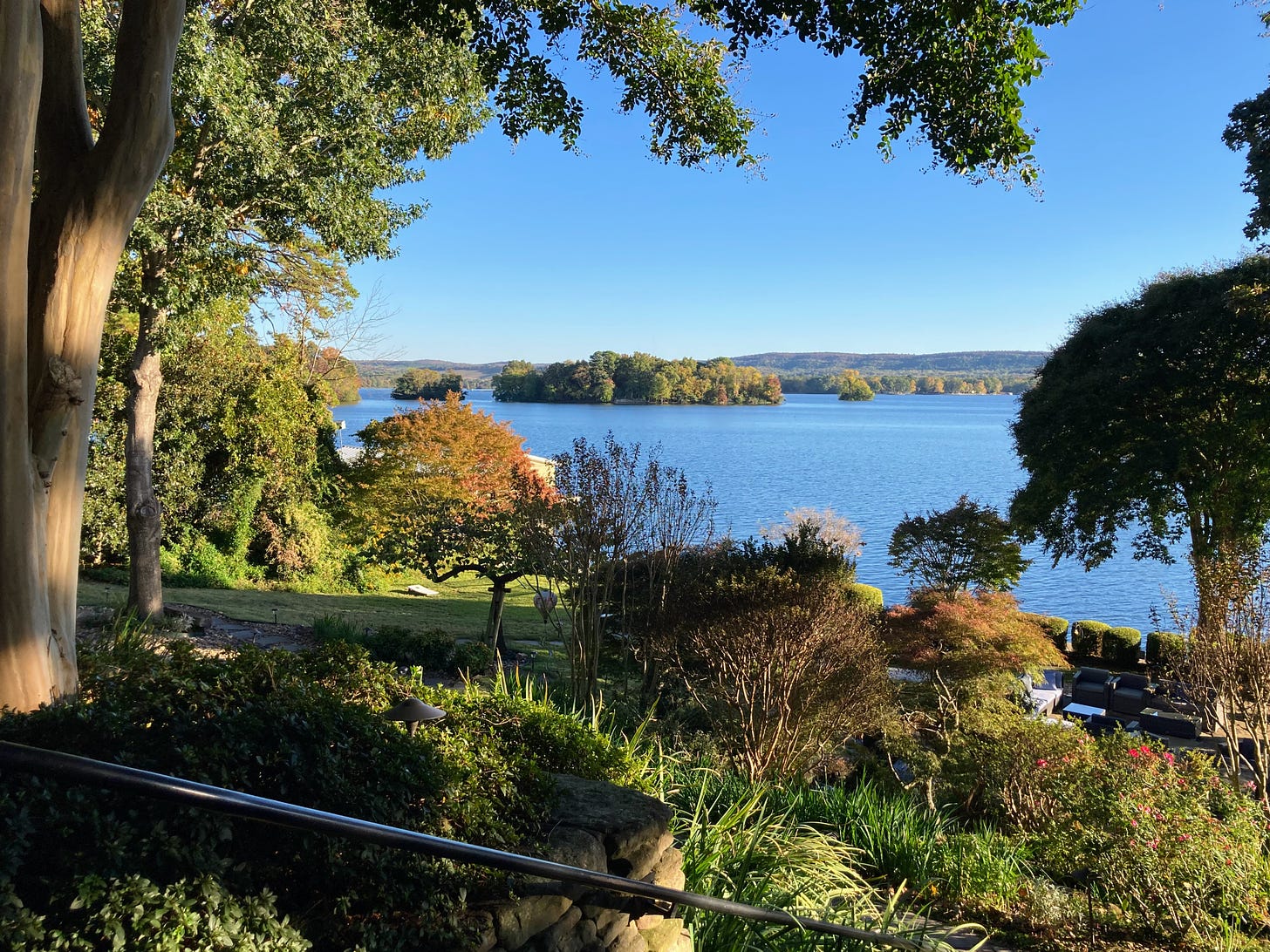
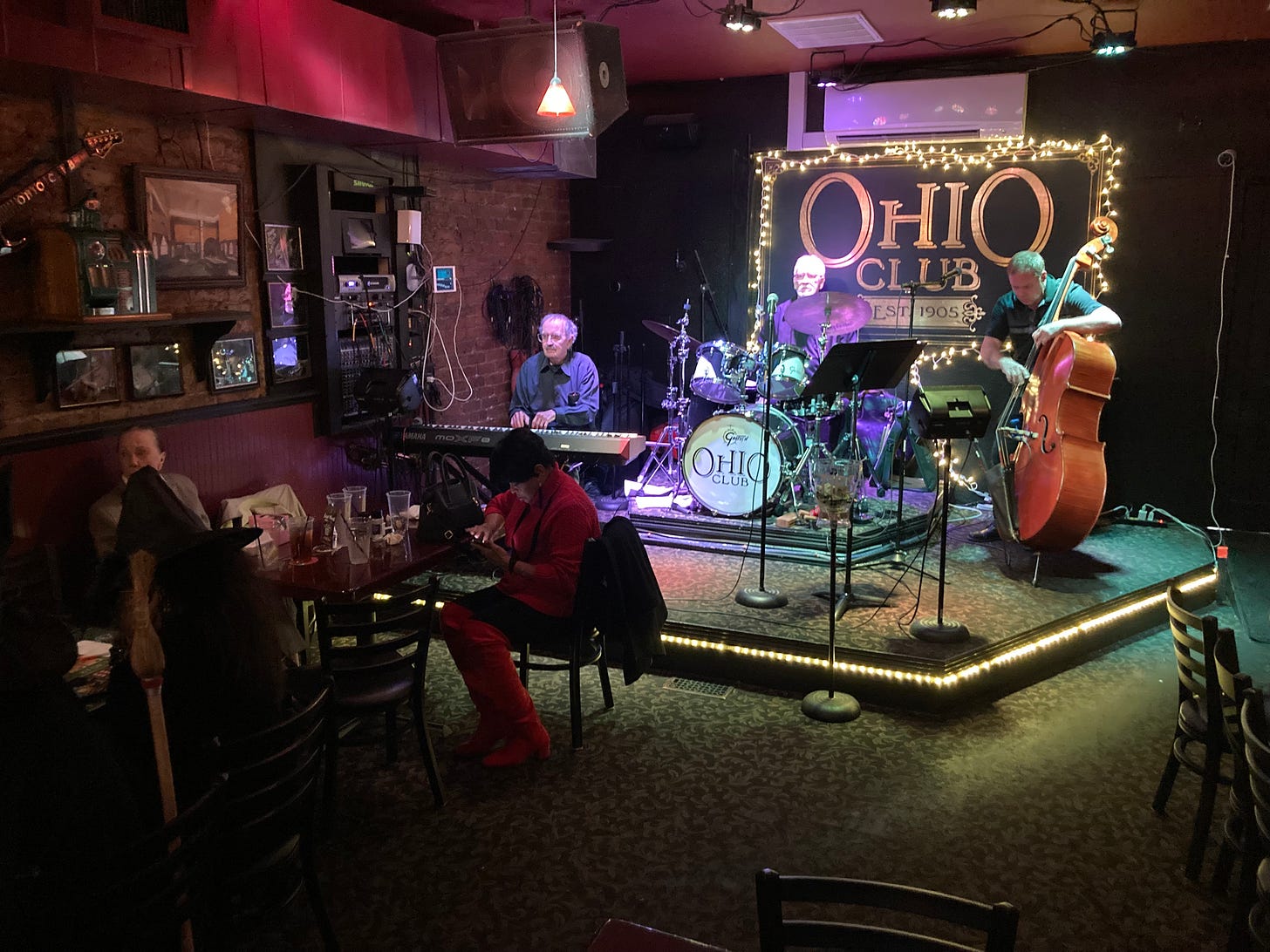
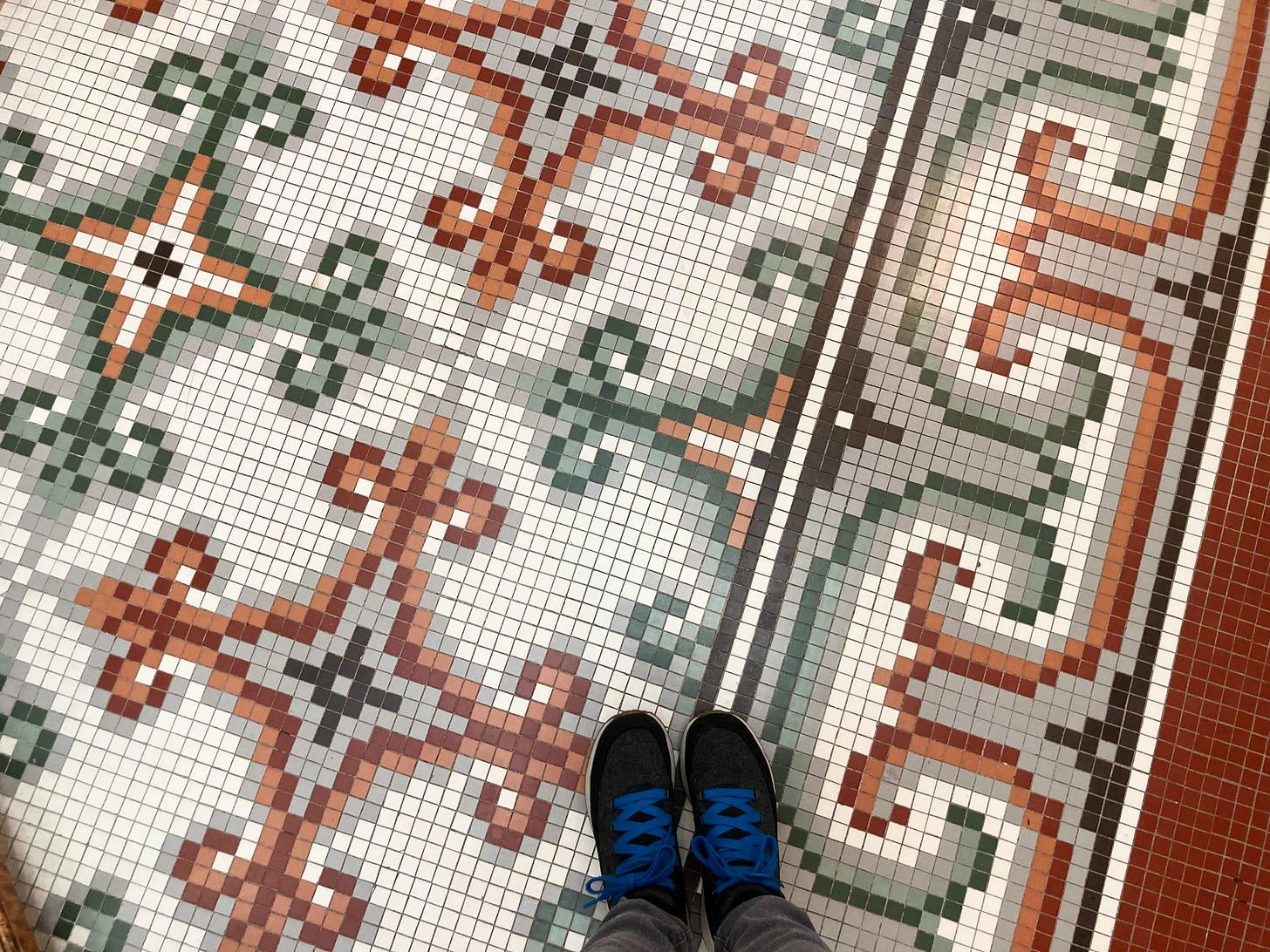
WOW! Now I have to put this little town on my radar. Aaron and I love visiting towns with tons of history and beautiful scenery. Can't wait to see what food you indulged in.
Very enjoyable, thank you :-)